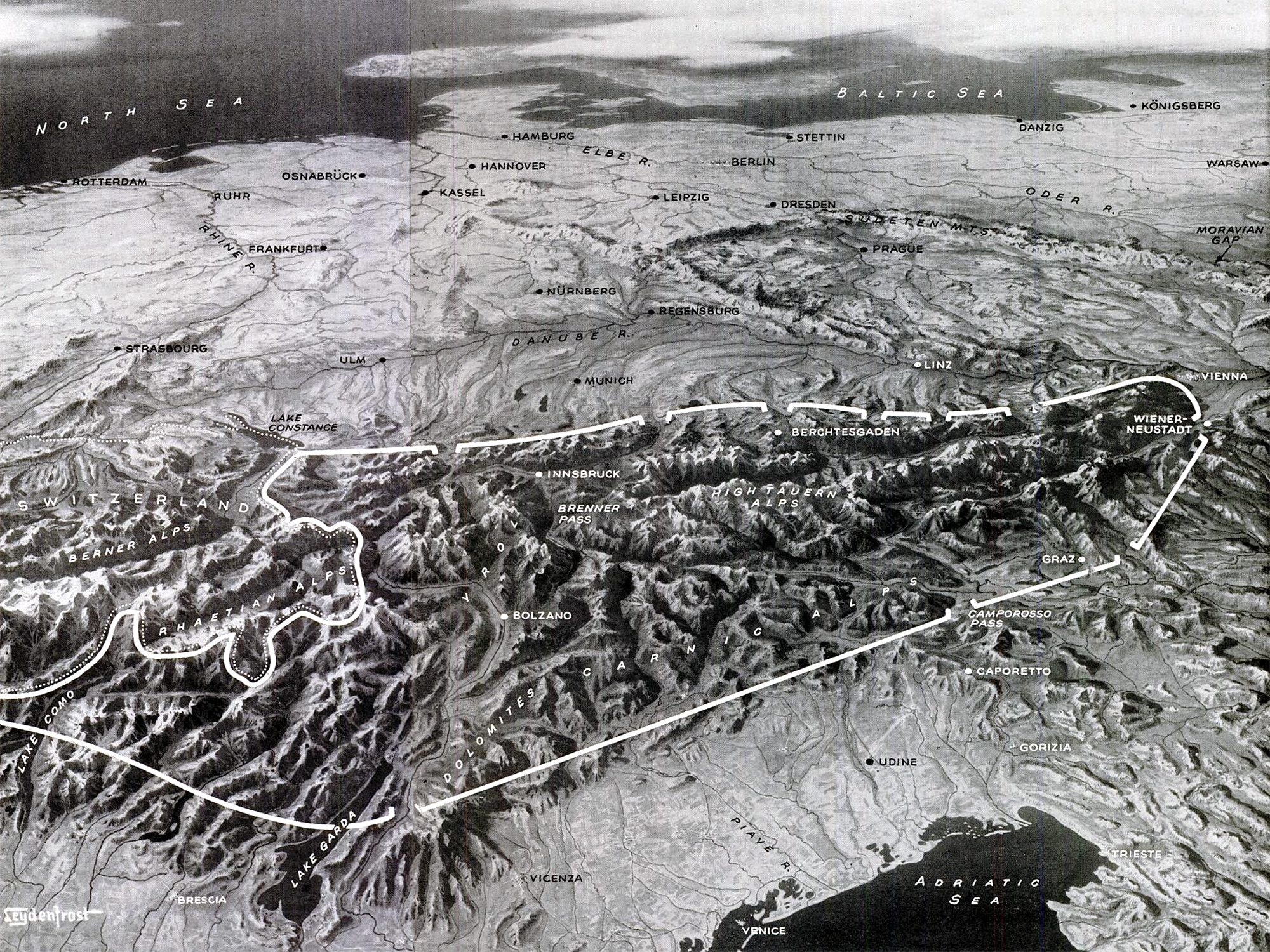As the war in Europe drew to a close, the Western Allies convinced themselves that the fall of Berlin would not be the end of it. The Nazis, they believed, would hunker down in the Austrian and Bavarian Alps and continue the war from a formidable Alpenfestung in the mountains.
Time magazine, in February 1945, predicted that top Nazi officials, accompanied by Hitler Youth fanatics and dedicated SS officers, would retreat, “behind a loyal rearguard cover of Volksgrenadiere and Volksstürmer, to the Alpine massif which reaches from southern Bavaria across western Austria to northern Italy.”
Immense stores of ammunition and food were being laid down in prepared fortifications there, Time reported. “If the retreat is a success, such an army might hold out for years.”
Life magazine similarly reported two months later, only days before Adolf Hitler shot himself in Berlin, that the German army was “wheeling back toward the best defensive positions in Europe, the Bavarian and Austrian Alps.”
Seventh Army prisoners told tales of their officers deserting in mass and heading for the Alps. There was a mysterious absence of SS divisions on the Western Front. A story of a Berchtesgaden meeting of all Nazi Party leaders March 26 leaked into Switzerland. The Vatican reported that its apostolic nuncio to Germany was now in Bavaria, heaving been evacuated from Berlin.
It seemed significant to Life that, as the Rhine and Order lines were rent, the Germans held firm in the Italian mountains and Franconia, north of Bavaria.
Salt mines in the area had been converted into war factories, it claimed, producing guns, fighter planes and gasoline. “There were said to be subterranean hangers, tremendous depots of coal, grain and foodstuffs.” The magazine estimated that as many as 25 divisions could hold up in the region.


Mountain fortress
“The mountain heart of Europe forms a natural fortress,” according to Life.
The neutrality of the republic of Switzerland protects the western flank. There are said to be extensive fortifications around Bolzano, southwest of Graz and around Berchtesgaden. Close to Berchtesgaden are the estates of Hitler, Göring, Himmler, Ribbentrop and the president of the Nazi Party, little-known Martin Bormann. This area in the high Tauern Alps would probably be the final defense system.
Life was in no doubt that the Nazis were capable of “so criminal and irresponsible an idea.”
Indeed, it could not believe the regime was about to give up. “The way the Nazis seemed to be whimpering into defeat belied their boastful threats of Götterdämmerung.”
Legend

The story appears to have originated with an Associated Press correspondent, Wes Gallagher, who reported in late 1944 that SS chief Heinrich Himmler had “started laying the plans for underground warfare in the last two months of 1943.”
Gallagher reported that Nazi leaders were planning to flee to the Alps once the military was defeated in the rest of Germany. From there, they would continue to wage war on Hitler’s enemies by leading a sabotage and guerrilla campaign.
Gallagher’s story was not unfounded. Himmler had proposed making preparations for a national redoubt, but Hitler never agreed. At least not until it was too late. Only a week before he committed suicide in his bunker under Berlin did Hitler order the evacuation of all remaining government personnel from the capital to the Alps.
Some preparations had been made. Tunnels were dug for underground factories, similar to the Mittelwerk facility near Nordhausen that produced the V2 rocket. But most of it was a propaganda coup by Joseph Goebbels.
He fooled even Dwight Eisenhower, the supreme allied commander, who pursued a broad-front strategy instead of a direct advance on Berlin in order to stave off any German resurgence in the south.
General Omar Bradley later said the Alpenfestung myth “grew into so exaggerated a scheme that I am astonished we could have believed it as innocently as we did. But while it persisted, this legend of the redoubt was too ominous a threat to be ignored.”





